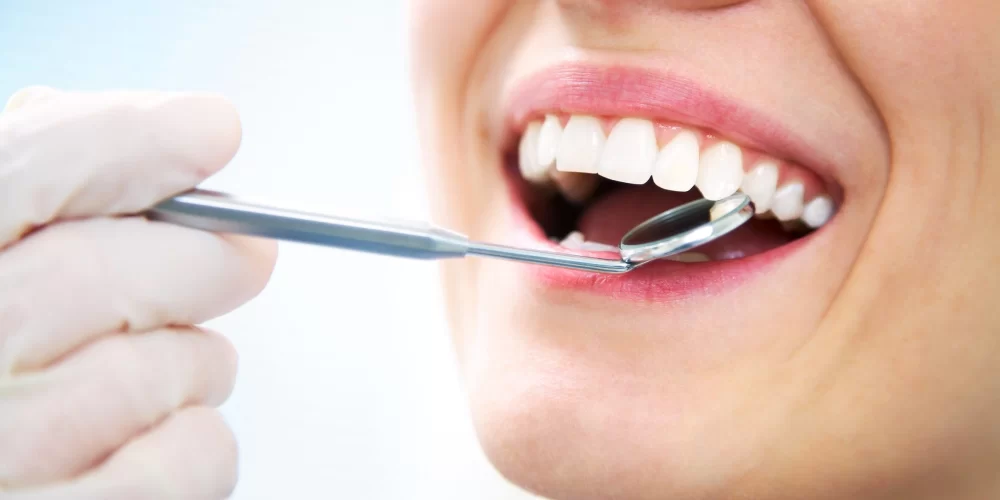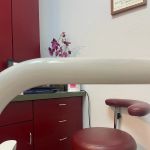
- Understanding Oral Cancer and Its Risk Factors
- The Impact of Tobacco and Alcohol on Oral Cancer Risk
- Role of Diet and Nutrition in Oral Cancer Prevention
- Oral Hygiene and Regular Dental Checkups: Cornerstones of Prevention
- Sun Exposure and Protection to Reduce Oral Cancer Risk
- Personal Stories and Professional Insights on Oral Cancer Prevention
1. Understanding Oral Cancer and Its Risk Factors
Oral cancer, a serious health condition affecting the mouth and throat, is often linked to lifestyle factors that can be managed and modified. Understanding the root causes is the first step toward effective prevention. Oral cancer typically arises from the uncontrolled growth of abnormal cells in the oral cavity. Risk factors include tobacco use, excessive alcohol consumption, poor diet, HPV infection, and prolonged exposure to sunlight. Awareness of these factors can empower individuals to make informed lifestyle changes that significantly lower their risk.
It is important to recognize that oral cancer is not solely a disease of older adults or smokers; younger individuals and those without typical risk factors can also be affected, making preventive measures universally relevant. By tackling each risk factor thoughtfully, we lay a strong foundation for oral health.
1.1 Common Risk Factors in Detail
Among the most significant contributors, tobacco in all forms — smoking cigarettes, cigars, pipes, or chewing tobacco — is a leading cause of oral cancer. Alcohol acts synergistically with tobacco, dramatically increasing the risk. Additionally, human papillomavirus (HPV), especially HPV-16, has been identified as an emerging cause, particularly in oropharyngeal cancers. Other environmental exposures, such as chronic irritation from rough teeth or ill-fitting dentures, can also contribute.
1.2 Why Early Prevention Matters
Oral cancer often presents subtle early symptoms like persistent mouth sores, lumps, or white and red patches that might be mistaken for minor irritations. Early detection through regular screening and preventive lifestyle modifications can greatly improve prognosis and reduce the need for invasive treatments.
2. The Impact of Tobacco and Alcohol on Oral Cancer Risk
Tobacco and alcohol are the two most preventable contributors to oral cancer. The chemicals in tobacco cause genetic mutations that initiate cancer development, while alcohol acts as an irritant that enhances the penetration of these harmful chemicals into oral tissues.
Quitting tobacco dramatically lowers the risk, but the benefits begin accumulating only after sustained abstinence. Cutting back or eliminating alcohol use further reduces the danger. Many people find success through combined strategies, such as support groups, counseling, and nicotine replacement therapy.
2.1 Case Study: A Real-Life Success Story
Consider the story of James, a 52-year-old who had smoked for over 30 years and regularly consumed alcohol socially. After a routine dental checkup detected suspicious lesions, James was advised to quit smoking and alcohol completely. Over two years, James successfully stopped these habits and adopted healthier behaviors. His lesions healed, and subsequent screenings showed no progression, demonstrating how lifestyle changes can reverse early damage.
2.2 Practical Tips for Reducing Tobacco and Alcohol Use
Start by setting clear, achievable goals. Replace smoking with healthier habits such as exercise or meditation. Seek professional help if needed. For alcohol, moderation is key, and choosing alcohol-free days during the week can help reset consumption patterns. These steps, although challenging, have a profound impact on oral health.
3. Role of Diet and Nutrition in Oral Cancer Prevention
Nutrition plays a pivotal role in maintaining the health of oral tissues and boosting the immune system’s ability to fight abnormal cell growth. Diets rich in fruits, vegetables, whole grains, and lean proteins supply essential antioxidants and vitamins that protect cells from damage.
3.1 Key Nutrients and Their Protective Effects
Vitamins A, C, and E, along with folate and carotenoids, have been shown to reduce oral cancer risk by neutralizing free radicals. A colorful plate filled with leafy greens, berries, carrots, and citrus fruits provides these nutrients in abundance.
3.2 Avoiding Harmful Dietary Habits
Excessive consumption of processed meats, fried foods, and sugary snacks can increase inflammation and cancer risk. Additionally, staying hydrated with water rather than sugary or acidic drinks supports oral health by maintaining saliva flow, which naturally cleanses the mouth.
4. Oral Hygiene and Regular Dental Checkups: Cornerstones of Prevention
Maintaining impeccable oral hygiene is crucial to lowering the risk of oral cancer. Brushing twice daily with fluoride toothpaste, flossing regularly, and avoiding harmful habits like nail biting or chewing on hard objects all contribute to a healthier mouth environment.
4.1 The Importance of Professional Dental Care
Routine dental visits allow for early detection of any abnormal changes in the oral mucosa. Dentists are trained to identify early signs of oral cancer or precancerous lesions, which often go unnoticed by patients. Regular professional cleanings also reduce harmful bacteria that can irritate oral tissues.
4.2 How Dentistry Toothtruth Supports Your Oral Health Journey
For those seeking reliable oral care products and professional advice, Dentistry Toothtruth offers tailored recommendations on the best toothbrushes, mouthwashes, and preventive services. Their expert guidance ensures you maintain the highest standards of oral hygiene, crucial in cancer prevention.
5. Sun Exposure and Protection to Reduce Oral Cancer Risk
Prolonged exposure to ultraviolet (UV) rays from the sun increases the risk of lip cancer, a common subset of oral cancers. Using lip balms with SPF, wearing wide-brimmed hats, and seeking shade during peak sunlight hours can substantially reduce this risk.
5.1 Understanding UV Damage
UV radiation causes DNA damage in skin and lip cells, leading to mutations that accumulate over time. Unlike the rest of the oral cavity, lips are frequently exposed to direct sunlight, making them vulnerable.
5.2 Real-World Application
Laura, an outdoor enthusiast, noticed persistent chapping and discoloration on her lower lip. Upon consultation, she was advised to use lip sunscreen daily and avoid midday sun exposure. Over months, her lip condition improved, illustrating how simple protective measures can prevent damage.
6. Personal Stories and Professional Insights on Oral Cancer Prevention
Beyond lifestyle adjustments, personal motivation and professional support are critical. Hearing stories from survivors who successfully adopted healthier habits can inspire change. Additionally, dental professionals emphasize the importance of holistic care that integrates lifestyle counseling into routine visits.
6.1 Survivor Story: The Power of Change
Mark, diagnosed with early-stage oral cancer, credits his recovery to quitting tobacco and improving his diet, alongside medical treatment. His journey highlights how lifestyle changes complement clinical care.
6.2 Expert Recommendations
Leading dental and cancer organizations advocate for public awareness campaigns about oral cancer risk factors. They also encourage patients to engage proactively with dental professionals to create personalized prevention plans.
In conclusion, preventing oral cancer through lifestyle changes is not only feasible but essential. By understanding risk factors, quitting tobacco and alcohol, adopting a nutritious diet, practicing excellent oral hygiene, protecting lips from sun damage, and seeking professional guidance, individuals can dramatically reduce their chances of developing this serious disease. For trusted oral care products and expert advice, Dentistry Toothtruth is your go-to resource on this journey toward healthier living.







 West Covina Dental Group and Orthodontics4.0 (274 review)
West Covina Dental Group and Orthodontics4.0 (274 review) Avella Family and Implant Dentistry4.0 (425 review)
Avella Family and Implant Dentistry4.0 (425 review) Dr. Chona F. Yu, DDS4.0 (18 review)
Dr. Chona F. Yu, DDS4.0 (18 review) South Mississippi Smiles - Gulfport4.0 (454 review)
South Mississippi Smiles - Gulfport4.0 (454 review) ClearChoice Dental Implant Center4.0 (314 review)
ClearChoice Dental Implant Center4.0 (314 review) Fair Oaks Orthodontics5.0 (29 review)
Fair Oaks Orthodontics5.0 (29 review) The Importance of Oral Health Education During Pregnancy for a Healthy Pregnancy
The Importance of Oral Health Education During Pregnancy for a Healthy Pregnancy Best Tips for Brushing Your Teeth Properly for Healthy Gums: Essential Techniques for Oral Health
Best Tips for Brushing Your Teeth Properly for Healthy Gums: Essential Techniques for Oral Health Why Skipping Dental Checkups Can Lead to Bigger Oral Health Problems
Why Skipping Dental Checkups Can Lead to Bigger Oral Health Problems Advantages of Porcelain Dental Restorations
Advantages of Porcelain Dental Restorations How Can Diabetes Cause Tooth and Gum Problems? Preventing and Managing Oral Health Issues
How Can Diabetes Cause Tooth and Gum Problems? Preventing and Managing Oral Health Issues Healthy Habits for Promoting Good Oral Health and Hygiene: Tips for a Healthy Smile
Healthy Habits for Promoting Good Oral Health and Hygiene: Tips for a Healthy Smile